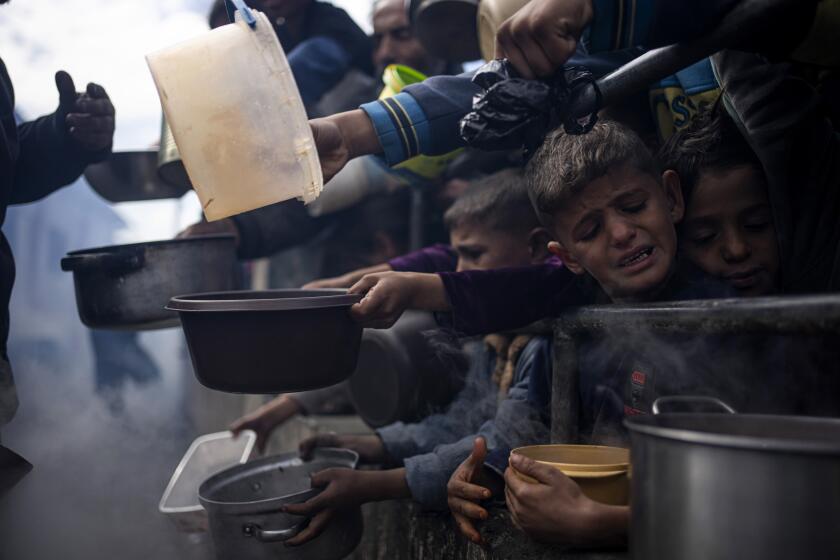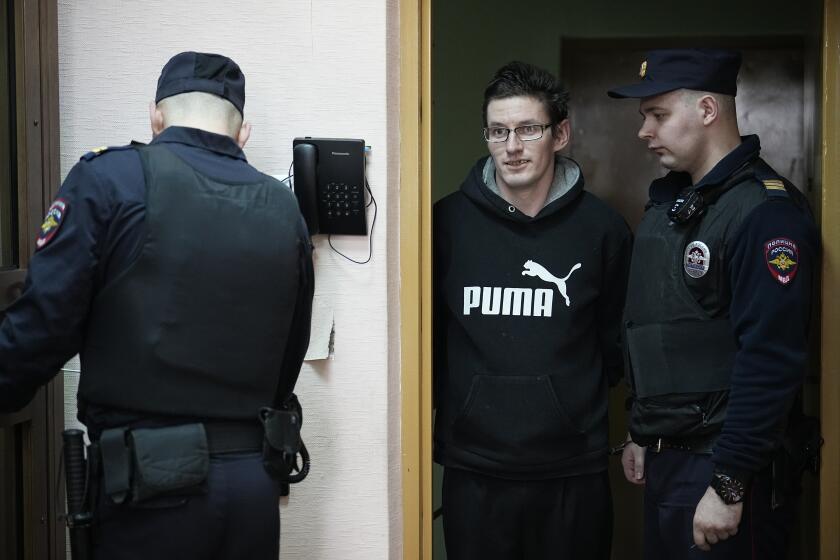As London cleans up from riots, residents fume
They share a city, and very little else.
But one thing united the rioters who have left a trail of shattered glass and burned-out buildings across London and the residents left to clean up the mess: anger.
Facing a storm of criticism for remaining on vacation while his city burned, London Mayor Boris Johnson returned Tuesday to tour Clapham, a well-off south London neighborhood that was one of many stunned by three nights of hopscotching riots that left one man dead and littered the urban landscape with hundreds of damaged businesses and residences.
The shaggy-haired conservative was greeted by crowds of furious store owners asking where police were as their livelihoods were destroyed.
“I felt ashamed,” he said after viewing the damage, “that people could feel such disdain for their neighborhoods.”
Community leaders, sociologists, police and lawmakers were left groping for a meaning for the worst social unrest to hit London in a generation. The riots laid bare a phenomenon that has stirred deep unease in Britain in recent years: “yobbery,” the anti-social behavior of a generation believed to be so alienated from the norms of civilized society that pockets of some cities live in fear.
But there appeared to be no social or geographical boundaries for the groups of young people who, as the riots gathered pace, used social networks to line up the next target, looting and burning their way through entire neighborhoods with the knowledge that they could outrun police in heavy riot gear.
Some officials, including former London Mayor Ken Livingstone, a leftist commonly known as “Red Ken,” blamed the unrest on recent government budget cuts, which have hit education, social assistance and community budgets.
But to many Britons, the riots were a near-anarchic crime spree that had nothing to do with politics, with hooded youths breaking into stores to help themselves to plasma TVs, clothes and even cash.
With the ostentatious wealth of so many rubbing up against hard-hit lower-income communities, it was difficult to ignore the backdrop of social disparity that defines London. Community activist Symeon Brown works with disaffected young people in Tottenham, the north London neighborhood where the unrest began Saturday night in the wake of a police shooting that left a 29-year-old father of four dead.
He said the unemployment rate is high in Tottenham, but it’s more complex than that. Young people there feel distanced from and hostile to police, who they believe treat their community with heavy-handed authority, he said.
The continuing riots are a kind of “imitation” of the Tottenham protest, “which was very much a stance against the police, who were seen as losing legitimacy in the eyes of a section of the community,” Brown said. “When that stand took place, you saw young people realize, ‘Wow, we’re actually taking a stance.’ Then they realized that they could get away with it.”
No one has been able to profile them, he said, “but I wouldn’t be surprised if many of them come from hostels or families where they weren’t accountable to parents; if you find an 11-year-old on the roads after midnight, you have to ask questions.”
But people on the streets appeared to have little sympathy for the young rioters.
Liz Pilgrim’s baby clothing shop in the upscale west London neighborhood of Ealing was trashed and looted.
“I can only say I met with a group of feral rats. Where are their parents? We need to get the army out,” she told the BBC.
The riots first struck districts neighboring Tottenham, but spread overnight Sunday to central Oxford Circus and southward to the multiethnic area of Brixton, which has begun to emerge from a dark past of race riots and social deprivation. By early Tuesday morning, crowds of marauders had moved to the more wealthy areas of Clapham and up to trendy Notting Hill.
Looting mobs have mushroomed across the country, with copycat riots in Birmingham and Bristol in central England and Liverpool and Leeds in the north. Unrest flared again Tuesday night in Manchester, Leicester, West Bromwich and Wolverhampton, and a police station in the central city of Nottingham was firebombed, officials said.
There were no reported injuries in the police station attack, which authorities said involved a group of 30 to 40 people in the city’s Canning Circus area. Several suspects were arrested.
Adding to the unease, Stephen Lennon, leader of the far-right group English Defense League, told the Associated Press that as many as 1,000 of its members would take to the streets of British cities in an attempt to quell rioting.
But London remained fairly quiet, with police out in force checking young people for weapons. By late Tuesday, at least 560 people had been arrested in London, with more than 100 charged. Dozens more were arrested in other cities.
Many Londoners were angered by what they saw as a delayed and inadequate reaction by the police and a lack of government leadership.
“What did I find when I came here late last night?” Emilian Sokoly, the manager of a betting shop in Ealing, said Tuesday as he mopped a bloodstained floor covered with broken glass and ransacked slot machines. He found a mess, he said, but “I didn’t find any police.”
Ali Shah, sweeping up the shattered glass of his beauty salon in Ealing, said his son phoned Monday to say there was trouble in the neighborhood.
“I didn’t believe him,” he said, “but I came to the salon late last night when the first small group of youths just passed by.... I thought it would be OK, then around midnight they came back, a crowd of about 200 with sticks, iron bars, anything they could use as a weapon. I left and ran.”
British Prime Minister David Cameron, returning from summer vacation, announced that police numbers in London were being almost tripled, from 6,000 inadequately spread around the city Monday evening to 16,000 on alert Tuesday night.
“We will do everything necessary to restore order to Britain’s streets and make them safe for the law-abiding,” Cameron said. “To those responsible, you will feel the full force of the law, and if you are old enough to commit these crimes, you are old enough to take the consequences,” he said after meeting with top security and police officials.
Gus John, an academic and activist who worked with young people in the Manchester area of Moss Side after race riots there 1981, said that “over-militarized solutions would be inappropriate” against what he sees as socially marginalized young people.
“We’re dealing with a betrayed generation of young people,” he told the BBC on Tuesday. “And what we have to do is understand how we deal with this immediate crisis, but at the same time address the issues that gave rise to this kind of young person who is fearless. They have no concern about the police, about CCTV cameras, helicopters, and some … believe they simply don’t have very long to live…. Why should they be concerned about raiding shops?”
In the wake of disaster, many Londoners, young and old, volunteered with brooms and buckets to help clean up and get people back in business, an echo of World War II, when residents helped one another endure the German bombs that pummeled the city.
As a customer with newly styled hair walked out of her windowless beauty salon in Ealing, Isabel Edison called out: “Anyone want an al fresco haircut?”
Stobart is a news assistant in The Times’ London bureau.
More to Read
Start your day right
Sign up for Essential California for news, features and recommendations from the L.A. Times and beyond in your inbox six days a week.
You may occasionally receive promotional content from the Los Angeles Times.






